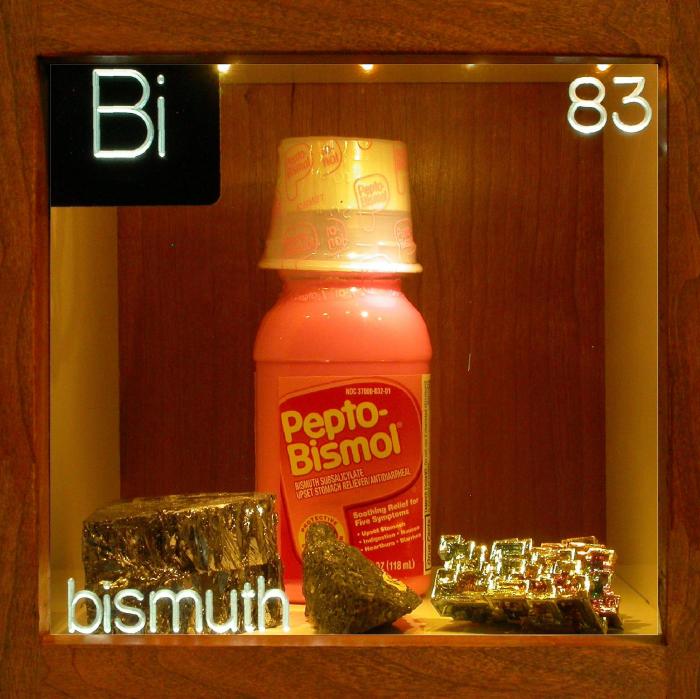Home Size: 1 2 3 4 5 6 7 8 9
|
 |
| A brittle, hard, shiny silvery metal which is sometimes found in crystalline form. It is resistant to oxidation and has a low melting point.
|
|
|
 |
Broken ingot.
All metals have crystalline structures but they are not always as easy to see as with bismuth. This is a fragment from a slab ingot approximately 1.5 inches thick. It would have been poured into a mold as a liquid (bismuth melts at a relatively modest 271 degrees C) and allowed to freeze . The horizontal line running parallel to the top and bottom surfaces is where the two advancing fronts of crystallization met.
Source: China
Size: c. 1.5"
Purity: 99.99%
|
|
 |
Artificial crystals.
Amazingly the remarkable shapes in these bismuth crystals are natural patterns, although an artificial process has been employed to reveal them. The technique is to withdraw the solidifying crystal just as it is freezing from the liquid metal which must be highly pure. These seemingly designed geometrical shapes are generated by the forces attracting one bismuth atom to another and are a direct consequence of the underlying mathematical formulas governing the behavior of bismuth's outer electrons. The rainbow colors are caused by a thin film of bismuth oxide on the surface which refracts incident light by a variable amount according to its thickness. This iridescent film can be removed by quickly dipping the crystal in an acid bath, leaving the silvery metal in this beautiful geometric form.
Source: eBay
Size: 2"
Purity: 99.99%
|
|
 |
Pepto-Bismol (Bismuth Subsalicylate).
Bismuth compounds have been prescribed for indigestion and stomach complains for well over 200 years. No-one is absolutely sure how they work. Somehow they protect the gastric lining against attach and may also reduce the activity of certain digestive enzymes. As the ready availability of Pepto-Bismol over the counter demonstrates, bismuth is a marked exception to the rule that heavy metals are toxic.
Source: Walmart
Size: 4"
Purity: n/a
|
|
 |
Native Bismuth.
Bismuth is not common as a native element, although it's not as scarce as elements like selenium and tellurium. It is silver-white in color, developing a pinkish, brownish or iridescent tarnish. In nature it occasionally forms indistinct crystals but is usually seen as massive pieces with a hackly fracture, lamellar, platy, granular or as interesting alluvial nuggets.
Source: Mackay mineral collection
Size: 1"
Purity: >90%
|
|

